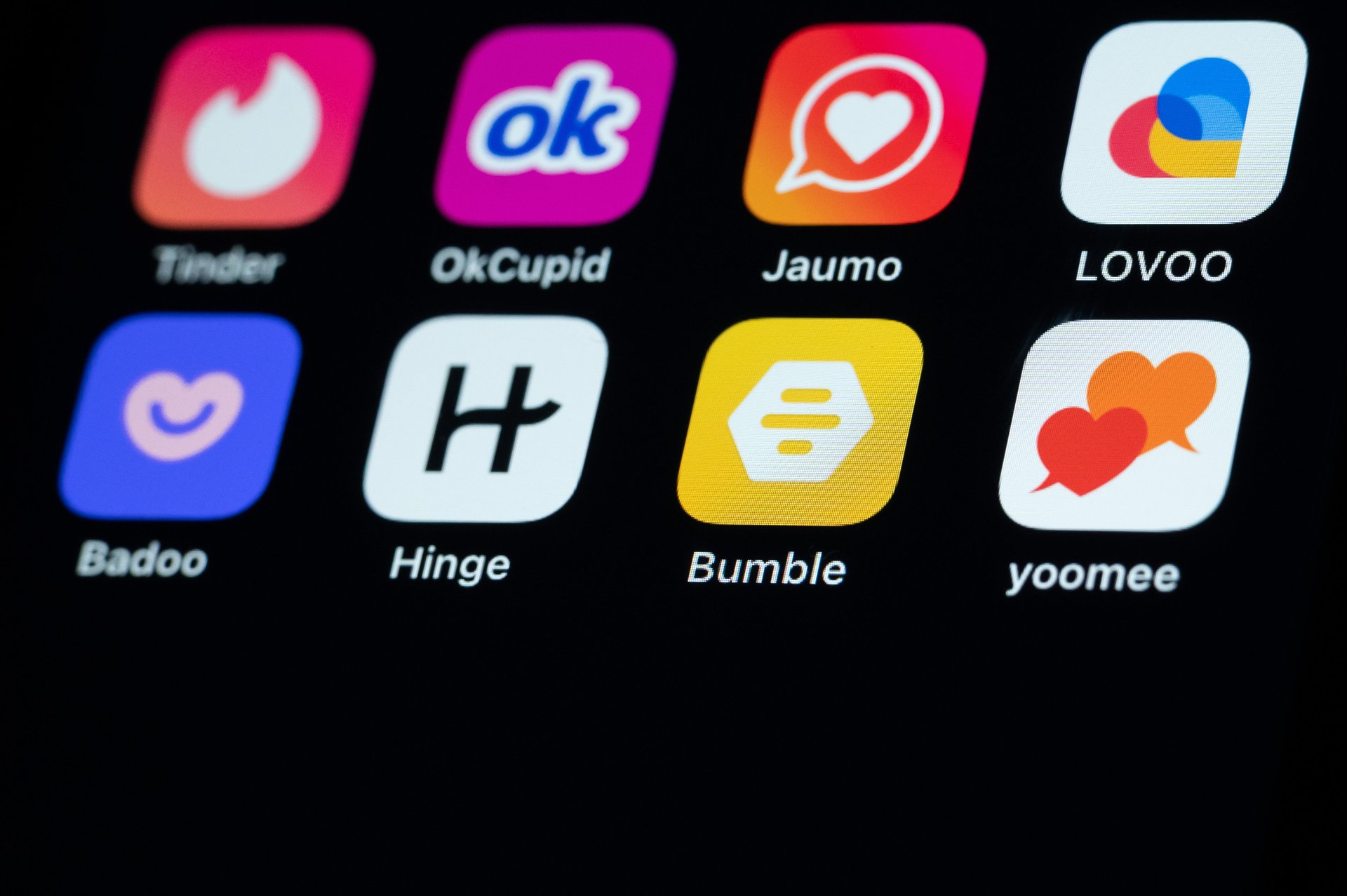Let's talk about dating apps — and why they seem to be getting worse
The algorithm can’t quite crack the code on human connection

A version of this article originally appeared in Quartz’s Obsession newsletter. Sign up here to share our Obsessions in your inbox.
For better or for worse, the process of meeting someone who could end up being the love of your life has been revolutionized with the rise of online dating. Gamified swipe-based apps such as Tinder and Bumble can make it feel even easier to meet people.
Each app has its own reputation, with Tinder being known for hookups, Hinge as the place for those looking for relationships, and Bumble for letting women have more control — and for just finding friends.
But in recent years, singles have complained that these popular dating apps are getting worse, with features such as unlimited swipes and preferences locked behind paywalls, and an algorithm skewed to make you pay for the matches you want. Women on Hinge, for example, have gone viral on TikTok over ways to “hack” the app’s “rose jail.”
While conversations between users have always been a success metric for dating apps, that experience has changed as companies look for more aggressive ways to monetize — much to the chagrin of singles who are burnt out from looking for the one and now spending more money to do so.
This phenomenon, known as “swiping fatigue,” is the feeling of exhaustion that comes from what seems like endless swiping and disappointing attempts to find real connections. Since 2020, downloads for dating apps including Tinder, Hinge, and Bumble have been on the decline due to tired and dissatisfied users.
Despite this, modern-day daters don’t seem to want to give up on finding love through the algorithm, and young entrepreneurs seeing this trend are building ways to find more authentic connections.
6.1 million: The number of Tinder downloads in June.
$499: The monthly cost of Tinder’s most expensive subscription, Tinder Select.
3-in-10: The proportion of U.S. adults who said they’ve used a dating app or site.
1-in-10: The proportion of partnered U.S. adults who said they met their current partner through a dating app or site.
A love-match, and a friend-match, too
As singles grow more disillusioned with traditional dating apps, entrepreneurs are looking to disrupt the industry with new ways to match that don’t involve looks-based swiping and addictive algorithms.
The dating app Happn, for example, notifies users when they’ve crossed paths with another user in their daily life in an attempt to make connections between people with similar interests.
Despite being an app, Happn’s creator Karima Ben Abdelmalek told Business Insider the mission “is to bring back people meeting offline.”
Other apps are trying to go beyond dating and focus on friend-matching and networking — similar to Bumble’s model.
InPress, a news-based dating and friends app, is one of them. After first launching in Washington, D.C., InPress co-founder Adam Harder told Quartz that the second most-popular use for InPress was women looking for other female friends.
“I started to realize, let’s not bucket ourselves into these traditional — frankly superficial — dating apps that prioritize people based on how pretty their profile is,” Harder said. “We’re not doing that. We’re rewarding authenticity and realness and figuring out how you think and feel about the world based on what’s happening, and using that to find people who tick in the same way.”
Harder is preparing to launch InPress in New York City on Valentine’s Day and said the waitlist is already more than a thousand people long. But a waitlist doesn’t mean InPress wants to be exclusive like celebrity dating app Raya or The League, which promises to help you date within the Ivy League set.
“The whole mission of this was to create an information ecosystem where love and authenticity and intellect all fuel each other,” Harder said.
Quotable
“The reason Tinder is so fun is because it does do that quick dopamine hit. It’s just an image and a binary choice. Unfortunately, connecting with humans is not binary.” — Adam Harder, co-founder of InPress
2009: Gay dating site Grindr is introduced as one of the earliest location-based dating apps.
2012: Tinder is released, introducing its popular “swiping” feature.
2013: Hinge launches as “the dating app designed to be deleted.”
2014: Whitney Wolfe Herd founds the “feminist” dating app Bumble, after resigning from Tinder.
2019: Facebook launches its own dating service, Facebook Dating.
Fun fact!
In 1965, two Harvard students used an IBM 1401 computer to create a matchmaking service called Operation Match.
